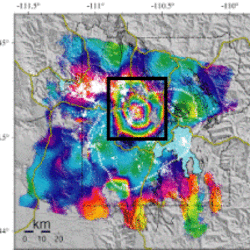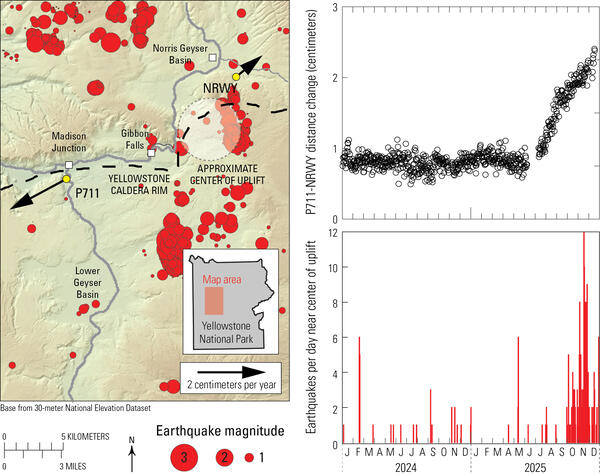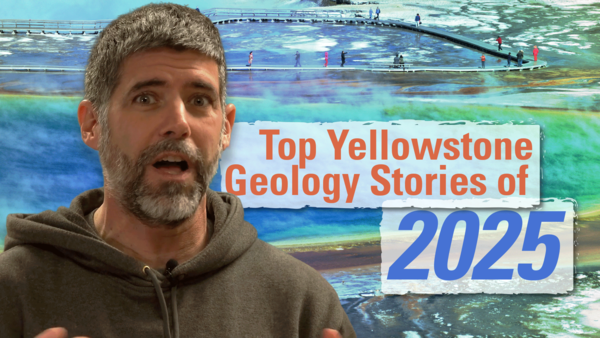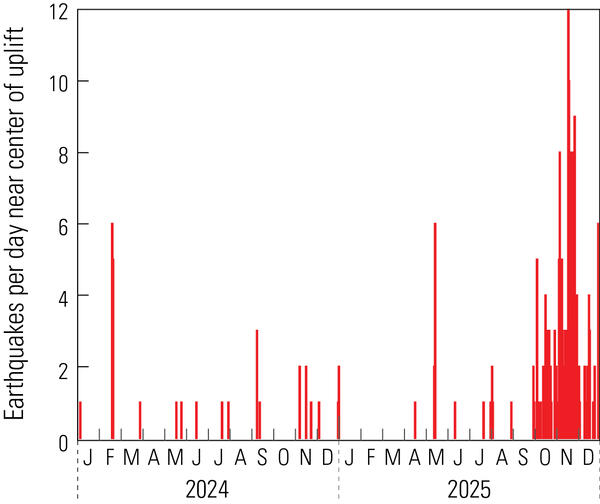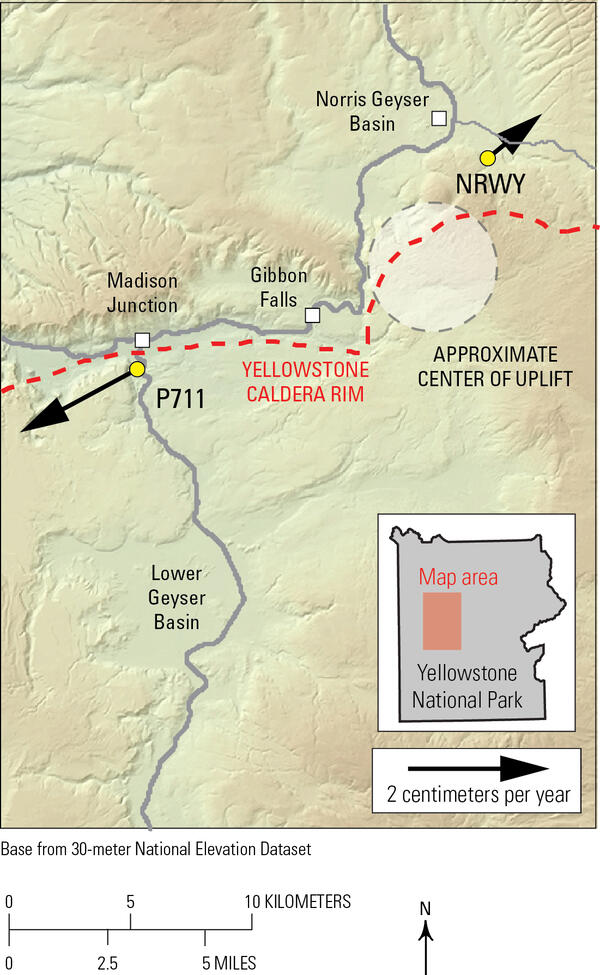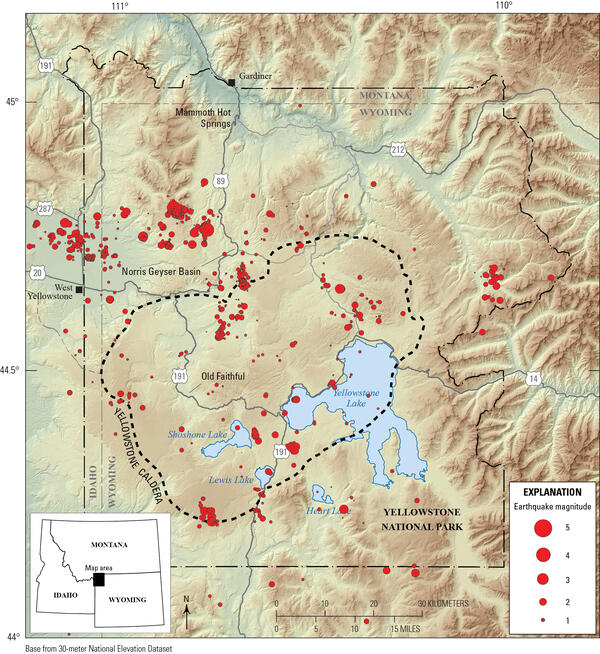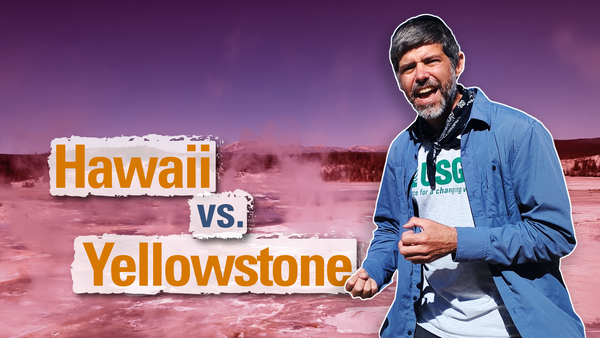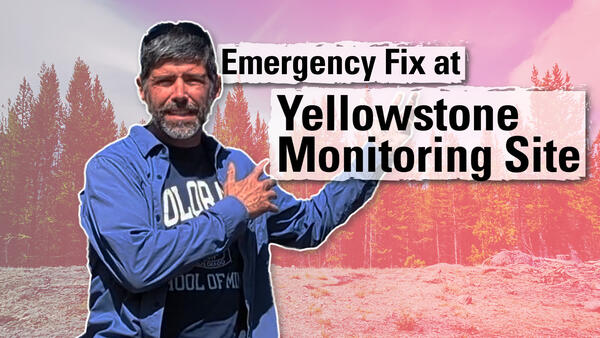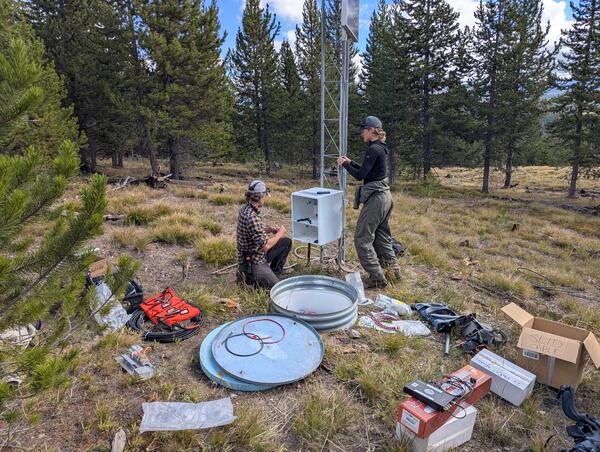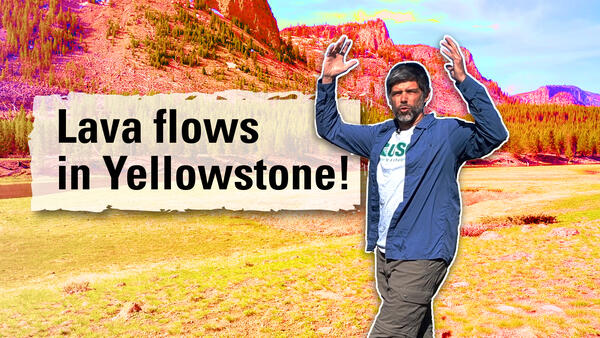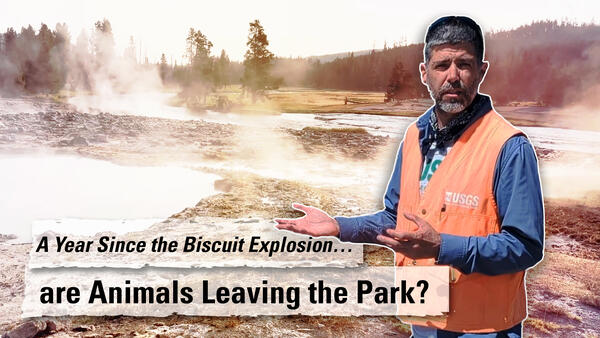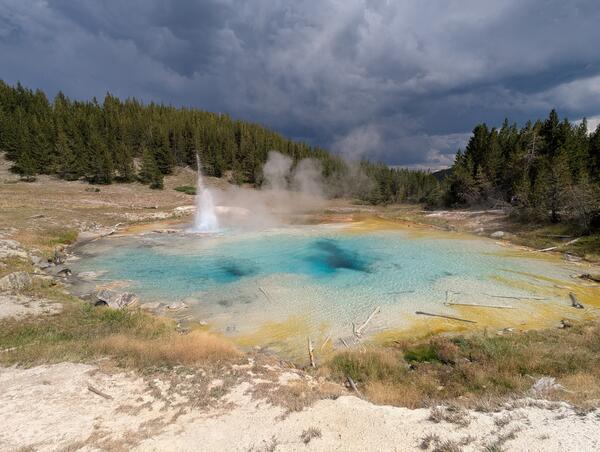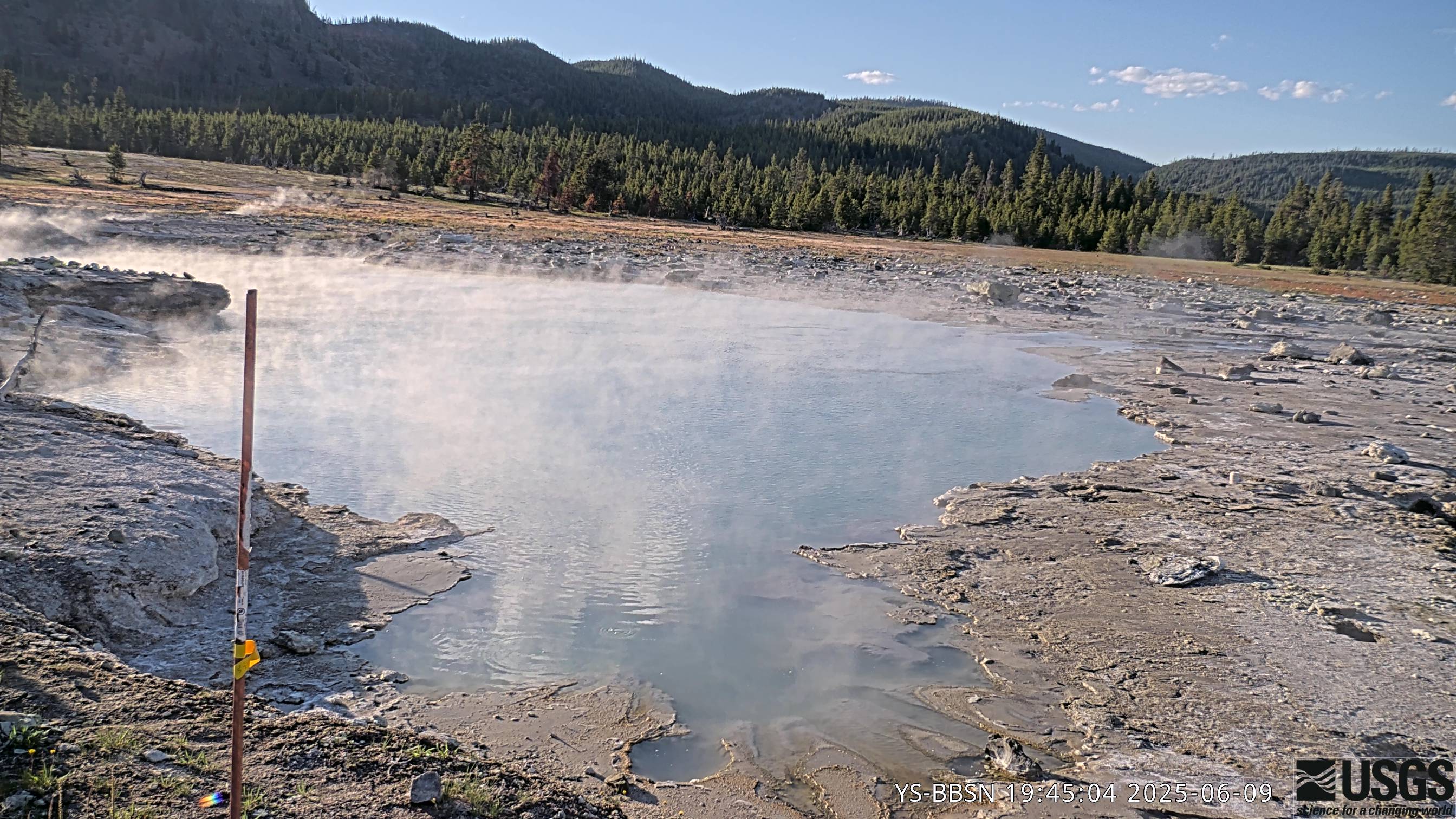Deformation and seismicity during 2024-2025 associated with Norris Uplift Anomaly, Yellowstone National Park
Deformation and seismicity during 2024-2025 associated with Norris Uplift Anomaly, Yellowstone National ParkMap of horizontal velocities between July and December 2025 at Global Positioning System (GPS) stations P711 and NRWY (arrows and yellow circles; arrow length gives displacement rate) in the area between Norris Geyser Basin and Madison Junction. Dashed black line indicates boundary of Yellowstone Caldera and gray lines are roads.


